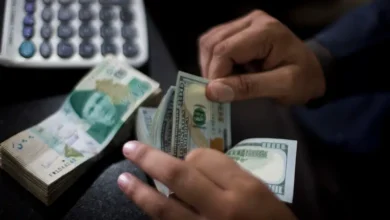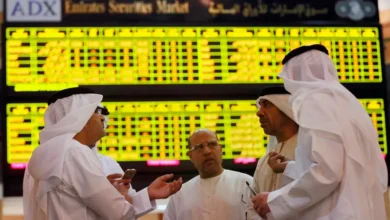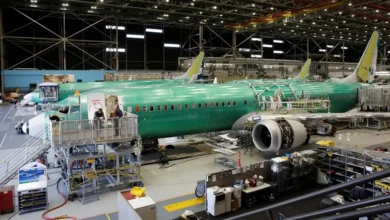Saudi Arabia’s Vision 2030 unleashes economic potential beyond oil sector

Saudi Arabia continues to witness significant economic transformation thanks to Vision 2030 that aims to reduce oil dependence and diversify the economy.
As the Kingdom continues to advance with this ambitious roadmap, more local corporations and public investment bodies have been recognizing their potential to drive innovation and economic growth through investments in the non-oil sector.
Arun Leslie John, Chief Market Analyst at Century Financial, noted substantial progress in economic diversification, especially in non-oil sectors which grew around 4.6 percent in 2023, driven by robust domestic demand.
Speaking at a Davos panel in January, Saudi Finance Minister Mohammed al-Jadaan highlighted the oil sector’s reduced contribution to the country’s GDP, saying it has decreased from 70 percent to 35 percent.
Saudi Economy Minister Faisal Al-Ibrahim also noted at Davos that the Kingdom’s non-oil economy has expanded by 20 percent since 2016, hence surpassing the growth rate in the US.
Data from Century Financial shows that from 2005 to 2010, the oil sector dominated the economy, representing 45 percent of GDP, 80 percent of revenue, and 75 percent of exports. However, from 2017 to 2022, diversification efforts reduced these figures to 30 percent, 57 percent, and 60 percent, respectively.
John believes that improvements in the regulatory and business environment have facilitated this diversification. New laws promoting entrepreneurship, protecting investors’ rights, and reducing business costs have also been instrumental.
Investment deals and licenses saw substantial growth in 2022, propelled by these reforms, with the Saudi Investment Fund (PIF) playing a role in stimulating private sector investment.
Looking forward, John expects non-oil sectors to drive economic momentum with the oil sector acting as a mature cash cow supporting diversification efforts. The 2024 budget allocates approximately SAR 189 billion ($50 billion), constituting 15.1 percent of total expenditure and signaling a strategic focus despite a slight decrease from 2023.
Sector outlook
John has a positive outlook for three main sectors in Saudi Arabia: Communications, Health and Social Development, and E-Commerce, supported by strategic investments and alignment with Vision 2030.
Communications Sector
The communications and technology market in Saudi Arabia is poised for growth, expected to reach SAR 172 billion ($45.8 billion) in 2024, driven by a 6 percent increase YoY. In Q3 2023, the communications sector displayed growth with a sales surprise of 0.92 percent and an earnings surprise of 22.08 percent.
The main driver of this growth is the increasing demand for mobile data services, which will account for almost 40 percent of the market share in 2024. The mobile data market is fueled by the widespread adoption of smartphones and the availability of high-speed networks, such as 4G and 5G, which enable users to access various online services and applications.
The Saudi government has been investing heavily in developing its telecommunication and digital infrastructure, aiming to achieve the Saudi Vision 2030 initiative. Over-the-top (OTT) platforms are also on the rise, challenging traditional pay-TV markets. The sector offers growth opportunities, but adaptation to evolving technologies and consumer expectations is crucial.
Health and Social Development Sector
Despite a reduced healthcare budget in 2024, the healthcare industry is expected to outperform, with projections indicating market growth to reach US$ 23.60 billion by 2028, up from US$ 21.38 billion in 2024. Factors contributing to this growth include increasing demand for quality healthcare, expanded health insurance coverage, and digital health solutions.
This increased demand can be attributed to the increased influx of population in the country, driven by the job opportunities created by Saudi Vision 2030. Furthermore, the social development sector is transforming, aligning with Vision 2030 initiatives to enhance citizens’ quality of life. Increased public spending, private sector involvement, and international cooperation are expected to benefit the sector.
Consumer discretionary
The e-commerce industry in Saudi Arabia is set to experience significant growth, with projected revenue reaching SAR 37 billion ($ 9.961 billion) in 2024, and is expected to continue to grow at a CAGR of 10.37 percent. The number of users in the e-commerce market is also expected to increase to 21.2 million by 2028, with a user penetration of 54.9 percent.
Adding on, the market covers various segments, including beauty, consumer electronics, fashion, food, furniture, and others. Major players such as Amazon, Noon, and Souq.com are driving market dynamics. Collaborations and new entrants thus continue to contribute to the evolving landscape.
Stock recommendation
Based on these sectors, Century Financial believes these are the top Saudi stock picks: Saudi Telecommunication Company and Etihad Etisalat Company (communication sector), Dr. Sulaiman Al Habib Medical Services Group and Mouwasat Medical Services (health and social development sector), and Leejam Sports Co and Jarir Marketing Company (consumer discretionary).
In a previous interview with Al-Arabiya Business, Abdullah al-Hamid, head of advice at GIB Capital, expected a positive outlook for the Saudi stock market, influenced by global market performances, especially Wall Street, and highlighted the banking sector’s positive outlook.
At the beginning of the year, SNB Capital recommended focusing on stocks in the banking, tourism, and healthcare sectors, specifically highlighting Aramco, STC, Bank, Albilad, SGS, Budget, and Al-Dawaa.
Aljazira Capital’s top picks include Al Rajhi Bank, Alinma Bank, United Electronics Company, Jarir, STC, Perfect Presentation, Mobily, Saudi Ground Services, Seera Group, Theeb, Yamama Cement, Eastern Province Cement, SABIC, and Sipchem. The firm noted that the basic materials, energy, and banking sectors are key contributors to the growth of the main market index (TASI).











